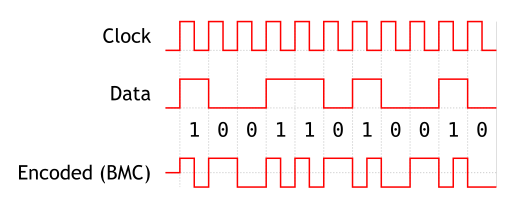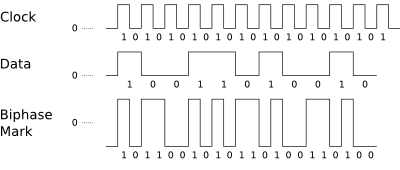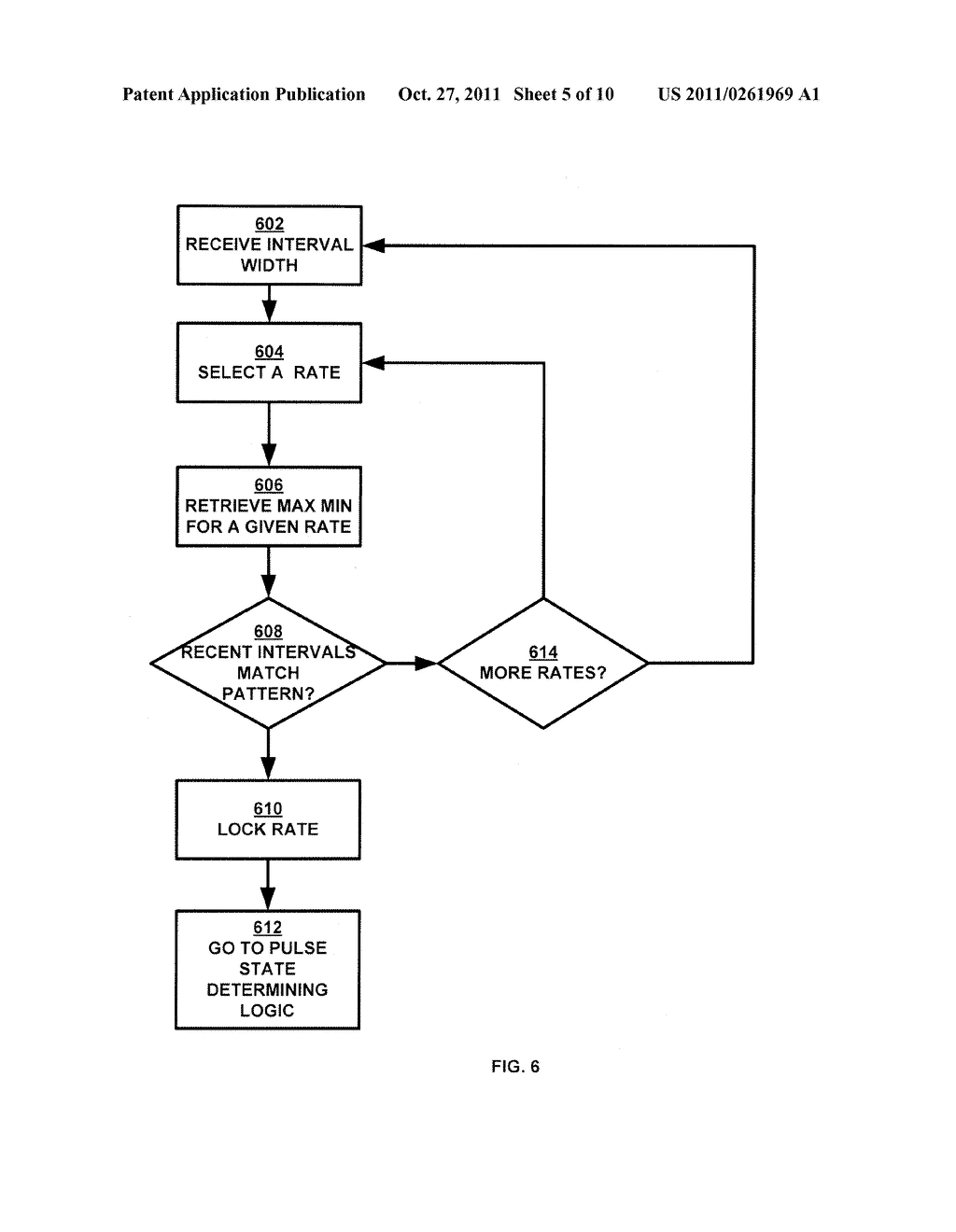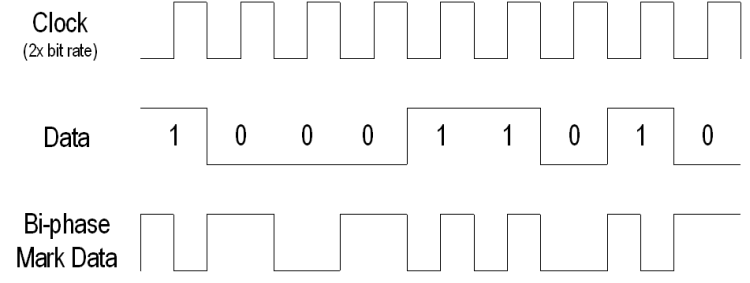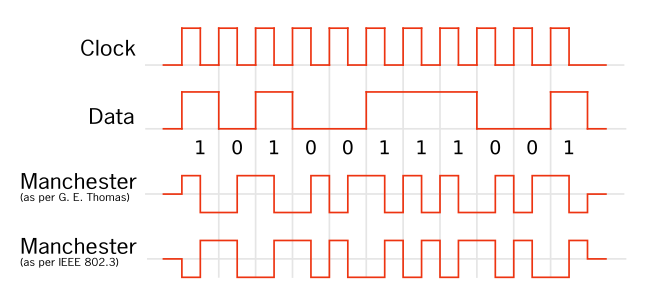Biphase-Mark-Code
The term two-phase mark code or English biphase-mark - code is a term used in telecommunications, refers to a line code.
It is similar to the differential Manchester code, but differs in a different phase of the encoded data stream: it is an additional time shift of the uncoded data signal by a half bit cell time necessary to convert the bi-phase mark code in the differential Manchester code.
For every bit of data, two conduction states are transferred. At the beginning of a bit, a state change is carried out as opposed to the Manchester code in any case. After that, the coding is different on the line as follows:
- At a 1, the state changes in the middle of the bit.
- At 0, the state remains the same until the end of the bit.
Applies the biphase mark code example for serial digital audio transmission in the spread in the studio -standard AES -3 and in the conventional in the home S / PDIF standard. The data stored on magnetic stripe data according to the standard ISO / IEC 7811 are coded using two-phase mark code.
- Line code

